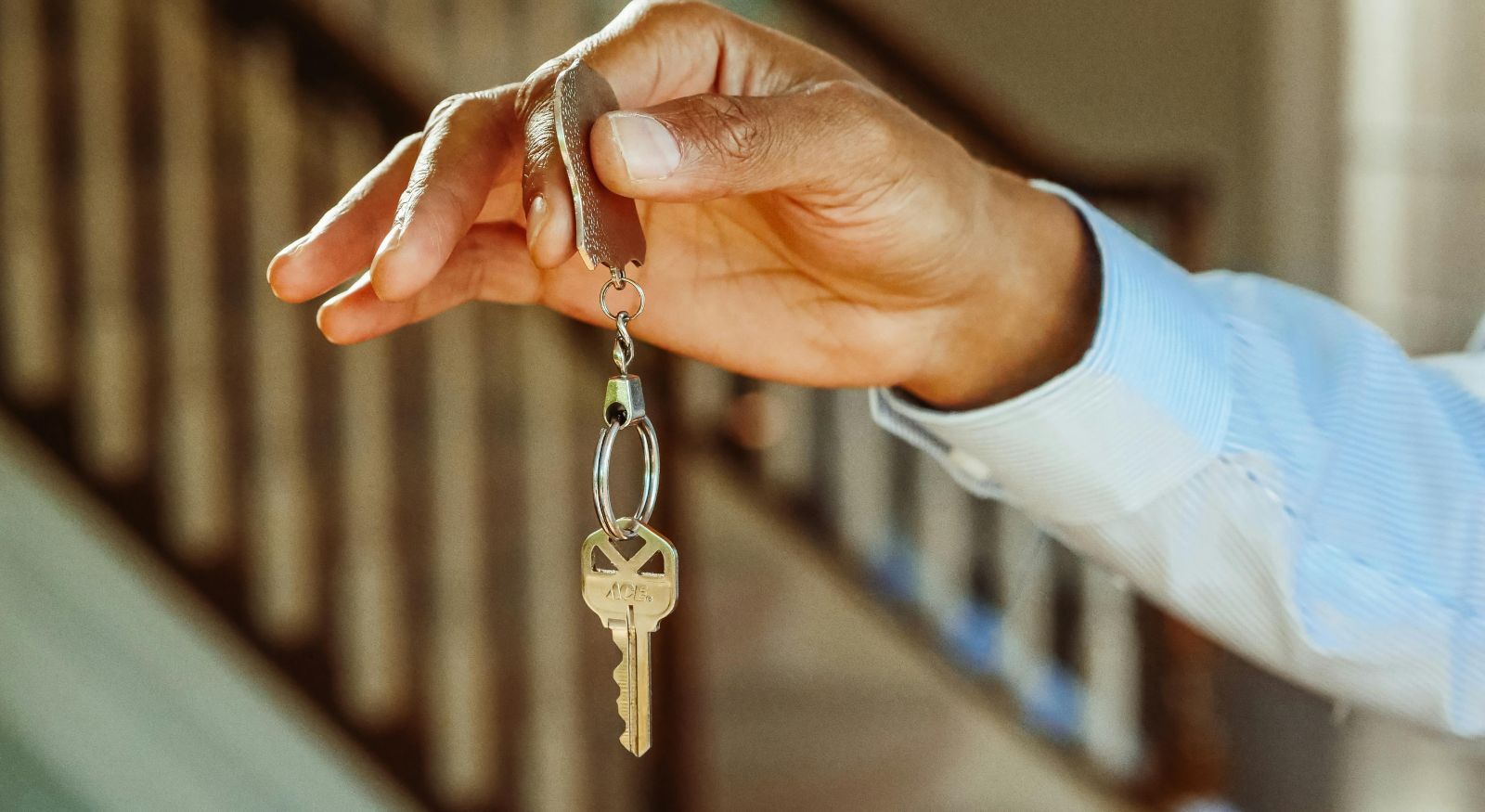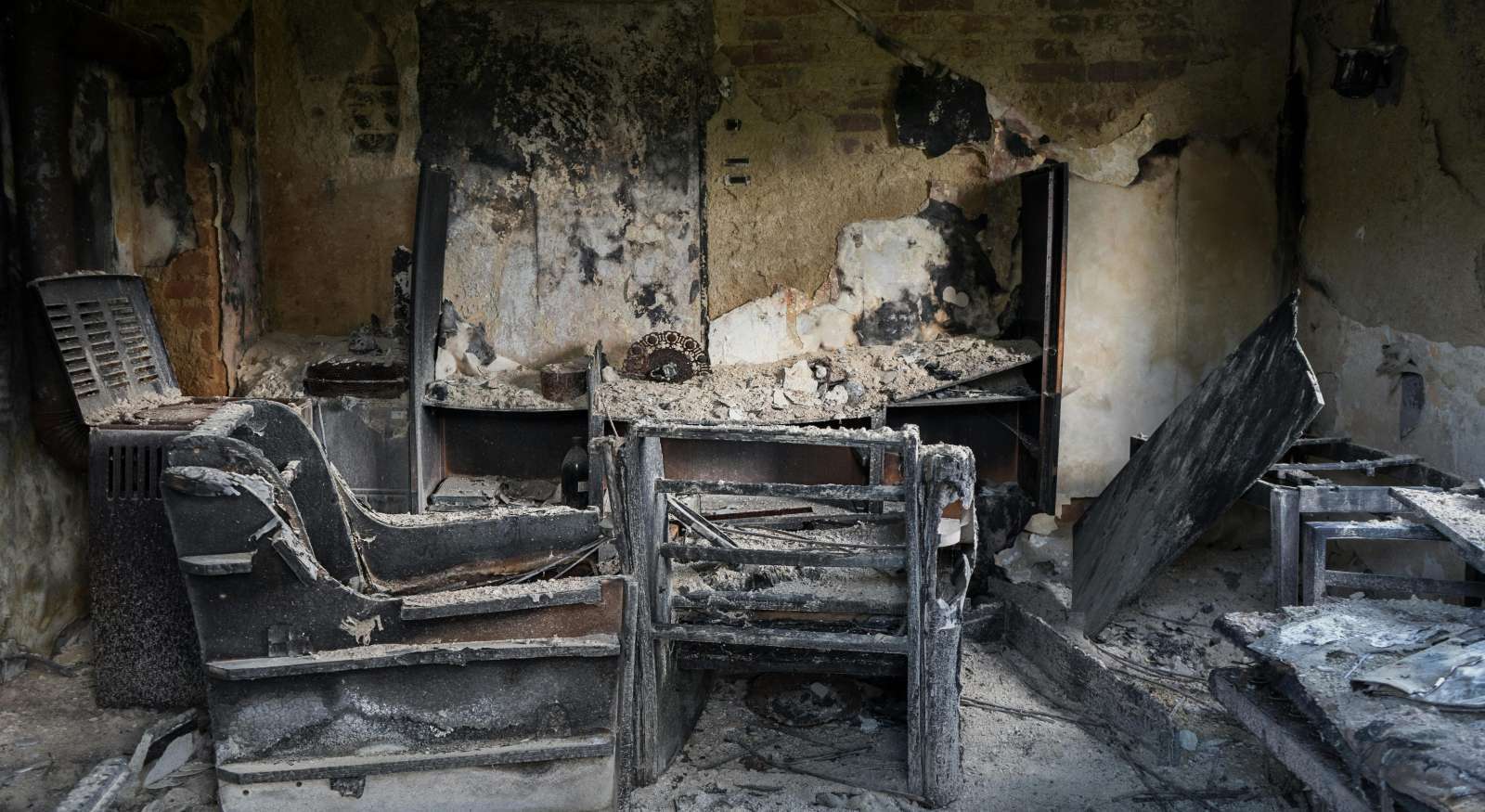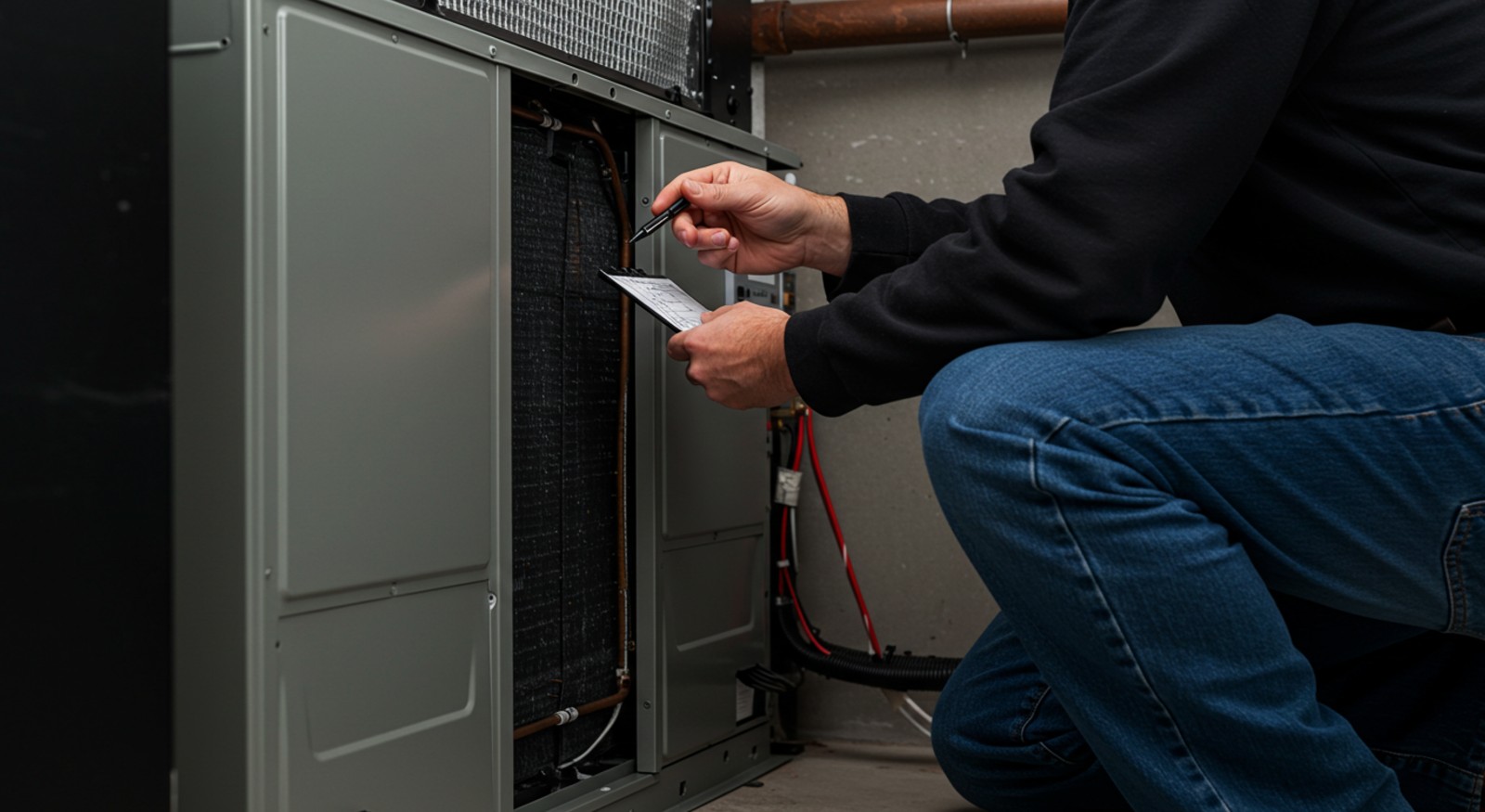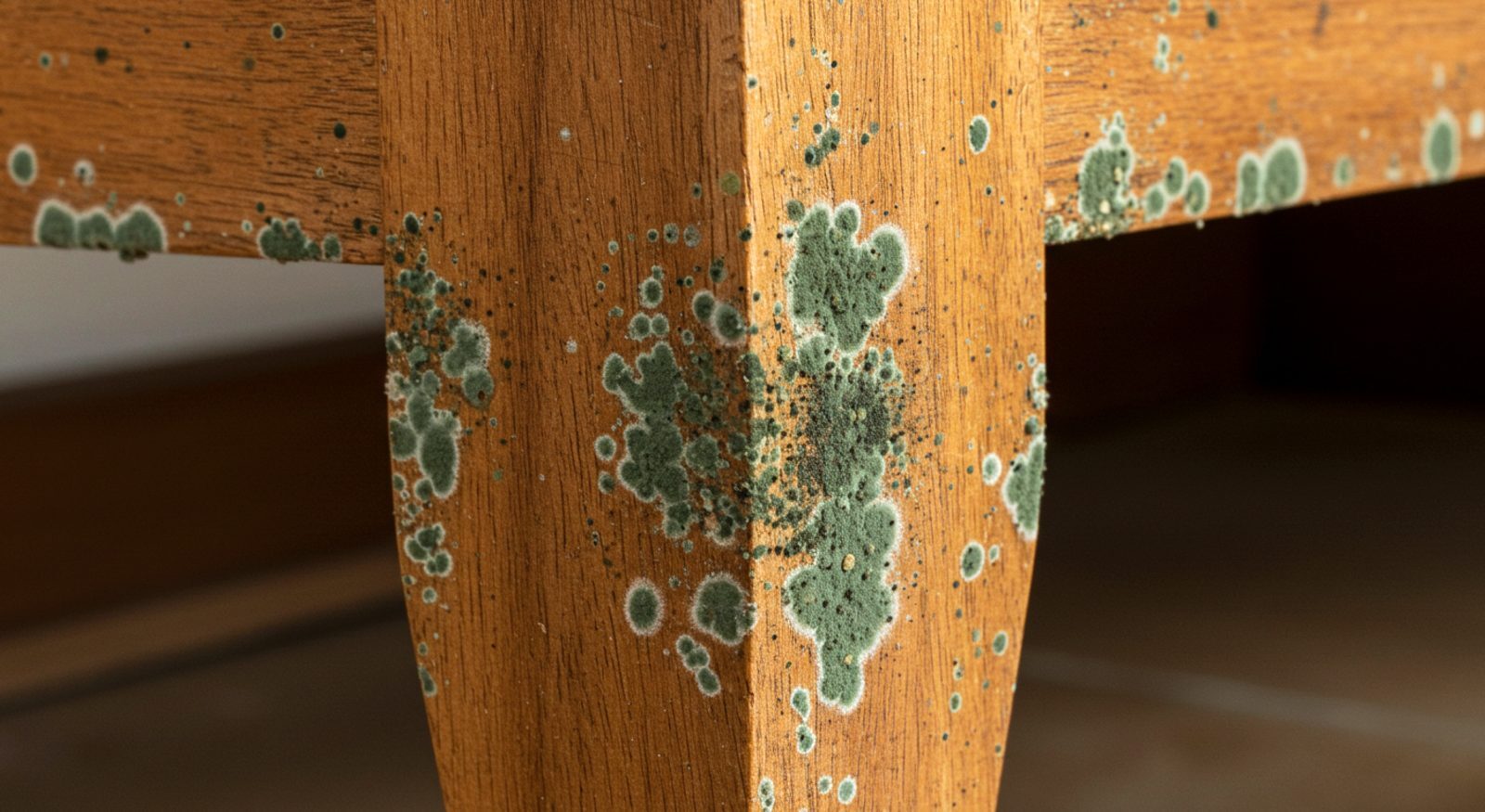A Guide to Prevent Indoor Mold After Fire Damage
September 24th, 2025
4 min read
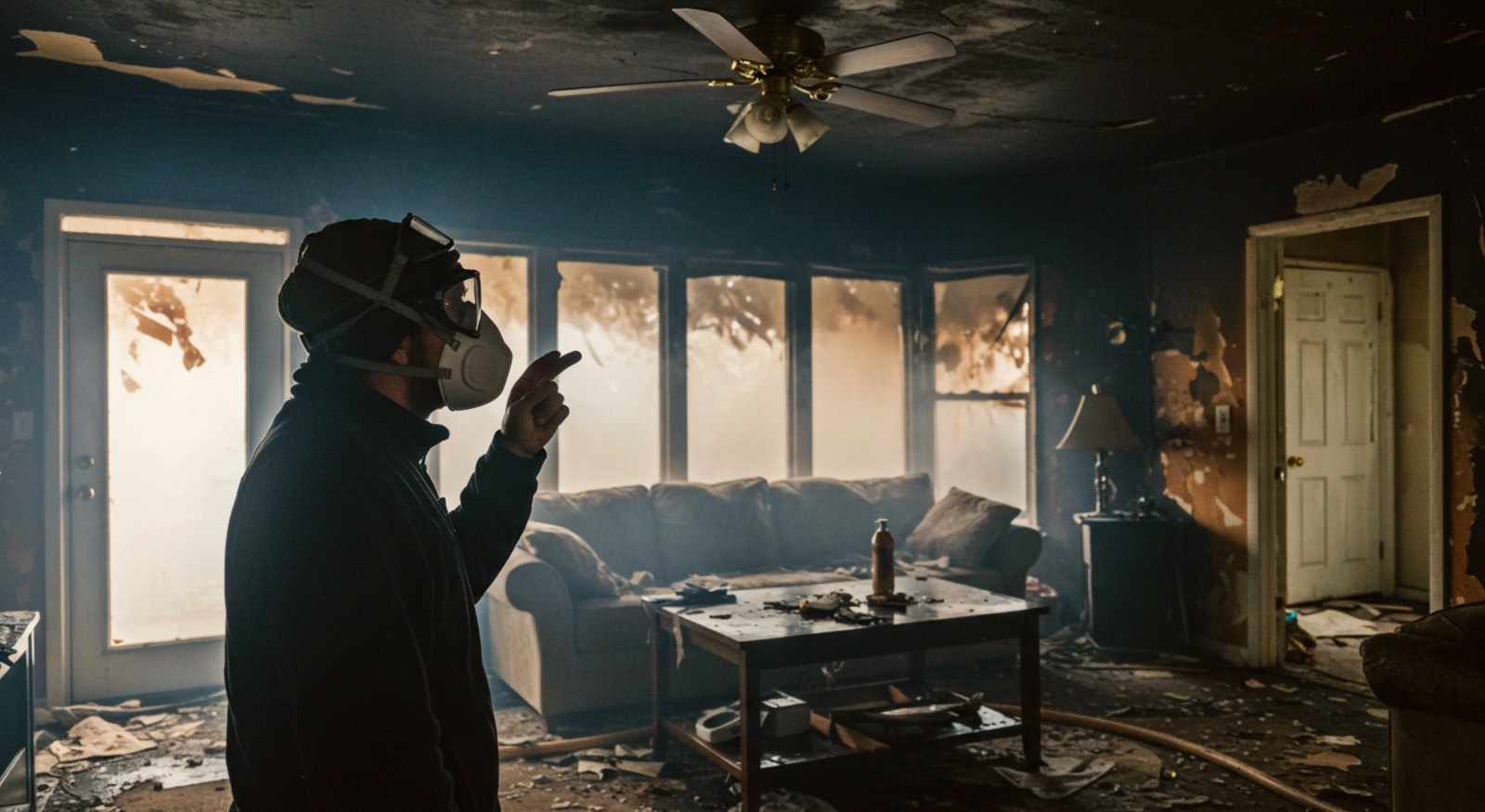
A fire in your home is an immediate danger to you and your family, which is why the first rule of order is to keep people away while it's being contained and dealt with. But have you ever thought about what happens after the flames are out?
The Fire Department will not think twice about using a ton of water to extinguish the flames. This, of course, is the correct course of action to prevent an even bigger disaster. However, it comes with another risk for your home: mold growth.
At Restore-It, we have dealt with fire restoration emergencies for over 10 years, and we are well-versed in all the dangers that lurk after a fire, including indoor mold.
Today, we are going to learn how to prevent mold after fire damage. We will cover why time matters, the steps you need to take immediately, and when it's best to call in professionals.
Mold: The Hidden Danger After a Fire
Most homeowners assume the fire itself is the biggest problem. In reality, water can become your biggest enemy if you don’t proceed with mitigation immediately.
- Firefighters can use thousands of gallons of water to put out a blaze.
- That water can seep into walls, floors, furniture, and belongings.
- Mold spores can begin growing within 24 to 48 hours in humid spaces.
The risk isn’t cosmetic, it’s about your health. Mold exposure can trigger:
- Allergic reactions.
- Asthma flare-ups.
- Chronic respiratory issues.
- Headaches and fatigue.
The takeaway? Speed is everything. The faster you act, the greater your chances of stopping mold before it takes over.
Step 1: Safety First, Always
Before even thinking about cleanup, ask: Is it safe to go inside?
- Fires weaken structures. Roofs, floors, and walls may be unstable.
- Electrical wiring can remain live and pose a danger.
So don’t enter until the fire department or a licensed inspector clears your home.
Once inside, wear protective gear:
- Hard hat
- Safety goggles
- N95 respirator mask
- Gloves
- Thick-soled boots
Remember: Your health and safety come first: don’t take shortcuts here!
Step 2: Remove Standing Water Immediately
Standing water on your building materials or furniture is like an all-you-can-eat buffet for mold. If you don’t want your home to turn into the “Mushroom Kingdom”, your mission will be to get rid of it fast.
If the affected area is small and you want to take care of it yourself, you can use a vacuum, as well as mops, buckets, towels, and sponges. Don’t forget to check basements, crawl spaces, and inside cabinets as water can hide anywhere.
However, if you are dealing with a bigger problem, you will need an industrial vacuum to pump the water away. For such a scenario, we recommend contacting your local restoration company for help.
Step 3: Dry Everything Thoroughly
Getting rid of visible water isn’t enough. You need to lower humidity levels below 50% to stop mold growth.
Arkansas tends to have very humid weather almost all year round, so you should be careful about applying the old tip of opening windows and doors to let air in. Using towels and clean cloths, wipe and dry as much as you can.
For larger affected areas, you should consider contacting a professional restoration company to ensure they dry properly so mold has no chance to grow. They will use air movers to blow across walls and floors and commercial-grade dehumidifiers.
Step 4: Remove Porous and Damaged Materials
Sometimes it’s too late to save some stuff affected by the water. If you keep them, they will become mold factories. Generally speaking, after a big fire, you might need to say goodbye to affected:
- Drywall and insulation
- Paper products and cardboard boxes
Saving wet, porous items (such as carpets and padding, upholstered furniture, mattresses, and bedding) almost guarantees mold growth.
However, if you are working with a restoration company, they might have the tools needed to restore some of them. Make sure to show them all your affected items to get a professional opinion.
Step 5: Clean and Disinfect Surfaces
If the damage is minimal and you are considering the DIY route, wear protective gear (face mask and gloves) and use mild soap and water to clean hard surfaces once they are dry. You can also use a disinfectant solution with bleach (1 part bleach to 10 parts water) only on hard surfaces (bleach is not enough to clean mold from porous surfaces).
But if the damage is extensive, you should leave it to the professionals. They have the knowledge and the equipment to safely clean and disinfect your affected items and surfaces.
Step 6: Know When to Call Professionals
DIY can be the solution if we are talking about minimal, contained damage. But sometimes you need expert help. Call a restoration company if:
- Water damage is widespread.
- You smell or see mold already.
- You don’t have access to industrial fans or dehumidifiers.
- You want to be confident that your home is safe.
When working on mitigation, a professional restoration team will use:
- Moisture meters to detect hidden water.
- Thermal imaging to see behind walls.
- Industrial drying equipment.
- Specialized antimicrobial treatments.
Mold prevention isn’t just about cleanup: it’s about protecting your family’s health and your home’s value.
Frequently Asked Questions About Mold After a Fire
How quickly does mold grow after a fire?
Mold growth can begin in as little as 24 to 48 hours once surfaces are humid.
Can I clean mold myself?
Small areas on non-porous surfaces can be cleaned with proper protection. The U.S. Environmental Protection Agency (EPA) recommends calling a professional restoration company for remediation if the mold covers more than 10 square feet.
Is smoke damage connected to mold risk?
Yes, in two ways: First, it can carry and spread mold spores, increasing their presence. Second, it creates a humid environment due to the large amount of water used to extinguish the flames.
Taking Back Control After Fire Damage
At this point, we have established that water damage after a fire can create the conditions for mold growth. Also, we talked about the importance of acting fast (mitigation) to prevent further damage in your home. We also mentioned that some materials might need to be discarded to avoid a future mold infestation. And finally, we discussed when you will need to call in professional help to ensure your family’s long-term safety after a fire.
Now that you have a clear view of the challenges after the fire and a step-by-step plan to prevent mold from taking hold in your home, you are capable of taking the course of action to protect your property and yourself.
If you have recently experienced a fire, your next move is to contact a fire and water damage restoration company. Here, at Restore-It, we have over 10 years of experience helping homeowners restore their homes safely and bring them peace of mind once more. Don't let mold become a second disaster! Reach out today and ensure your home's future.
Topics:










